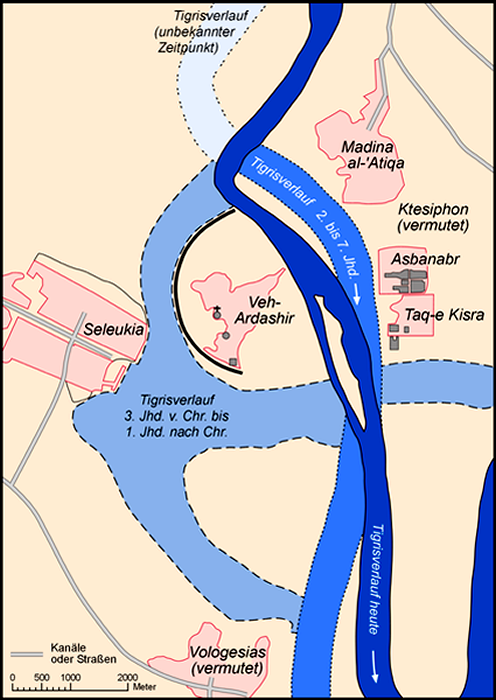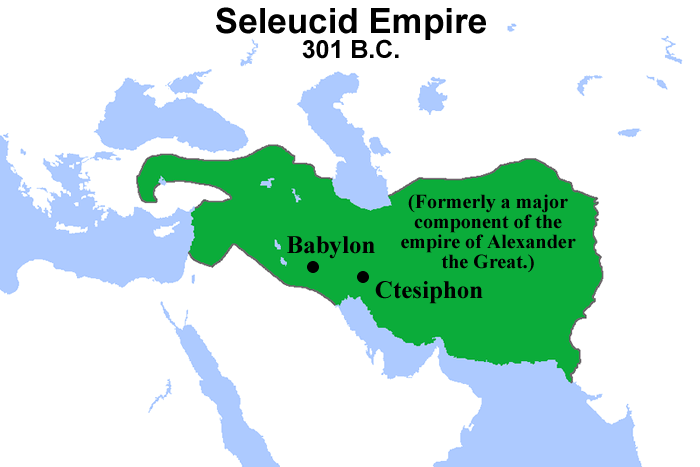 Seleucid Empire
Seleucid Empire

(Text by Duane R. Hurst © 2013)
Click on a link to view its information and pictures.
|
SELEUCID LINKS: Significant Event: Battle of Ipsus in 301 BC Battle of Raphia in 217 BC Main Cities: Antioch; Ctesiphon Time: 323-90 BC Language: Aramaic; Old Persian Personage: Seleucus Religion: Greek Gods; Persian Gods Related Country: Iran; Iraq |
|
|
Brief History: I have included only a few items concerning the history of this empire. A good source for more details can be found on Wikipedia or in history books. RISE OF SELEUCUS: In 323 BC, general Perdiccas became regent upon the death of Alexander. He was commander of the Macedonian phalanx and later arranged murders of various royal family members and opponents, particularly other members of the "Diadochi" (Successors). While attacking general Ptolemy, who formed an empire in Egypt, disgusted officers murdered Perdiccas. General Seleucus, "Commander-in-Chief of the Camp", succeeded to the Babylonia satrap. He later expanded control over the greatest portion of Alexander's empire, including a two-year war against the Mauryan empire. He made an agreement with Chandragupta Maurya to cede eastern territory in exchange for 500 war elephants. Seleucus used the elephants, along with help from Lysimachos (Diadochus ruler of Thrace), to defeat Antigonus Monophthalmus at the Battle of Ipsus in 301 BC. He then annexed lands in western Anatolia. His attempt to seize more territory from Lysimachos ended when Ptolemy Keraunos (King of Macedon) had Seleucus assassinated upon landing in Europe. DECLINE AND EXPANSION: Successors to Seleucus maintained relations with Mauryan rulers, including the great Ashoka. During the reign of Antiochus II, the Seleucids faced a Celtic invasion in the west and numerous wars with Ptolemy II. In 245 BC, Diodotus I declared independence and formed the Greco-Bactrian kingdom. During this period, Andragoras broke away, however, circa 238 BC Arsaces I of the Parni killed Andragoras and started the Parthian empire. The Seleucids also lost western lands to the Gauls in Galatia and through local rebellions. In 223 BC, Antiochus III ascended the throne and embarked on a series of conquests that expanded the empire. Antiochus recovered Greco-Bactria and Persia. He also received tribute and 150 elephants from an Indian king named Sophagasenus. In 196 BC, Seleucid forces gained a foothold in Thrace and invaded Greece in 192 BC. The following year, a Roman army defeated Antiochus in battle at Thermopylae. They invaded Asia Minor and forced Antiochus to cede much territory. Antiochus died in 187 BC while pillaging the temple of Bel at Elymais, Persia. Between 167 and 160 BC, a Maccabean Revolt resulted in a briefly independent Jewish kingdom. A priest named Mattathias ben Johanan instigated the revolt by refusing to worship Greek gods. The revolt succeeded through the use of guerrilla tactics. COLLAPSE OF THE EMPIRE: A Treaty of Apamea (188 BC) with Rome contributed to the eventual collapse of the Seleucid empire. Antiochus IV Epiphanes attempted to expand the empire by invading Ptolmaic Egypt. Despite leading his army to Alexandria, Antiochus withdrew after Rome threatened war with the Seleucids. Civil war broke out after his death. The empire encompassed little more than Antioch and a few cities in Syria by 100 BC. The end came in 63 BC, when the Roman general, Pompey annexed the area. |
|
|
© Page Publisher: Duane R. Hurst
|


